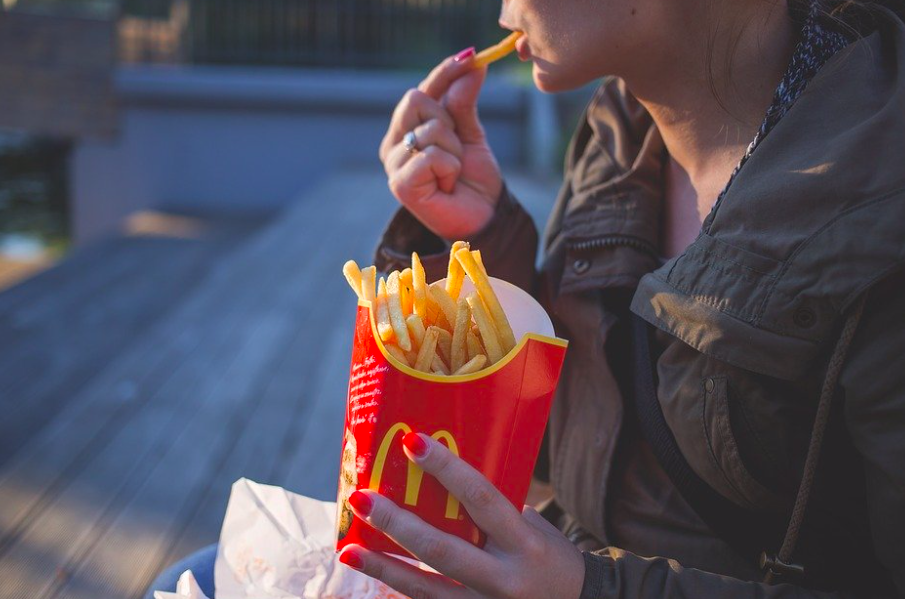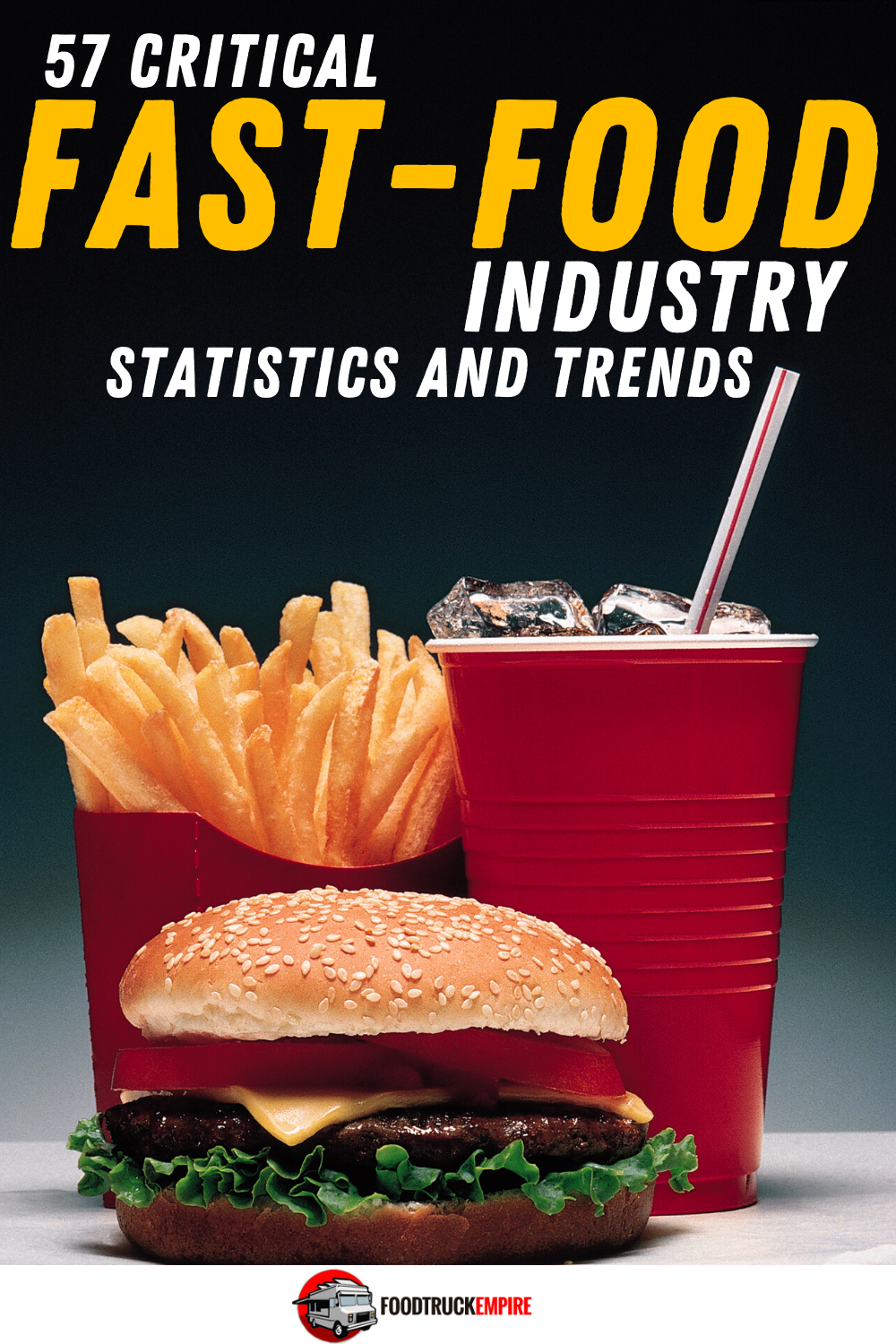When we think fast food, we’re thinking about American food. No one knew who the Burger King, Wendy’s, or Ronald McDonald was prior to the mid 1900s. Nearly a century later, fast food chains imagined in the United States are globally recognized symbols of American culture and a growth industry earning hundreds of billions of dollars every year.
And the industry as a whole is well positioned for these times of rapid change. Since the COVID-19 pandemic hit the global population, the fast-food industry was better prepared to adapt to new social norms that restrict dine-in sales. While dine-in sales have still hurt some chains, the bottom line is quick-serve restaurants have been able to adapt much better than restaurants without a drive-thru.
Wendy’s recently reported that their drive-thru sales now accounted for 90% of sales in a recent quarter. Restaurants without the drive-thru or easy pickup are being impacted the most.
In this industry report, we evaluate data that’s shaping the industry. We also provide data-backed predictions for the future of this essential industry.
Fast Food Industry: Fast Facts

French Fries are an All-American staple.
Around 20% of American meals are consumed inside the vehicle, a concept which was not a statistic prior to the establishment of fast food.
9 in 10 American kids go to a McDonald’s restaurant each month.
80% of Americans dine in a fast-food restaurant at least once each month. (PartnersForYourHealth.com)
Despite being the more famous fast-food chain in the world, McDonald’s does not hold the most number of locations around the world. Subway has 44,229 locations scattered in 112 countries, while McDonald’s has a mere 36,900 stores spread in 119 countries. (Title Max)
50 million Americans consume fast food on any given day.
Undeniably, McDonald’s is the most famous fast-food chain around the world. Globally, there are numerous McDonald’s stores spread over a hundred countries serving more than 40 million customers per day. (Science Kids)
The fast-food industry employs close 3.78 million people. (Medium)
McDonald’s serves an average of 75 burgers per second. (PartnersForYourHealth.com)
There were 6 billion fast-food ads that appeared on Facebook, equivalent to 19% of all fast food display advertisements. This figure includes over half of Wendy’s and Dunkin’ Donuts’ advertising. (Fast Food Marketing)
Meat pies, hotdogs, and doughnuts are some examples of fast food being sold in convenience stores. (Science Kids)
Fast food really lives up to its name as in most cases, your food can be prepared and served in less than 10 minutes.
Fast Food and Your Health Data

Fried chicken is a popular fast-food menu.
An adult typically takes in 836 calories per serving of a fast food meal. (HelpGuide)
It would take 4 complete hours of playing frisbee to burn off a typical 840 calorie McDonald’s kids’ meal (small fries, cheeseburger, chocolate milk).
A study collectively conducted by the University of California in Berkeley and Columbia University found that obesity occurrence among students rose by 5.2% whenever there was a fast-food chain inside an o.10 mile radius from any given school. (Eatthis.com)
Consuming a complete fast food meal is typically equivalent to 37% of an individual’s daily calorie intake.
It takes fewer calories, around 500-700, when you order a 6-inch sub rather than a foot-long. (HelpGuide)
What has more sugar than eating more than two and a half Snickers bars? That’s the original recipe of McDonald’s Sweet Tea which contained 69 grams of sugar in each 32 oz. cup. The fast-food chain has since cut it down to 38 grams, which is still way excessive to consume regularly.
The fast-food industry have reduced the calories in their menu by 12% in just a year by making minute changes into their ingredients. (ShopKick)
Despite its “healthy” sounding ingredients, two slices of Sbarro’s “Broccoli, Spinach & Tomato Pan Pizza” load 60 grams of fat, 1,280 worth of calories, and 2,600 milligrams of sodium which would surely raise your blood pressure.
Related Reading: Cooking is My Passion. Should I Start a Restaurant?
Only less than 1% or 33 out of a possible 5,427 kids meal combination met suggested nutritional standards even though there was an increase in kids’ meal choices. (Fast Food Marketing)
A typical burger in most fast-food chains can contain as much as 1,000-2,000 calories especially when it has bacon, cheese, and extra patties. (HelpGuide)
United States Fast Food Industry Statistics

The fast food industry employs an estimated 3.7 million in the United States.
Hamburger fast-food chains continue to dominate the U.S. fast-food landscape making up for more than 30% of the total industry sales. (Franchise Help)
Around 96% of Americans visited McDonald’s at least once.
The U.S. fast-food industry revenue makes about $110 billion yearly.
The Top 10 fast-food chains in the U.S. by revenue (system-wide, includes franchise sales) are the following: (Title Max)
- McDonald’s: $37 billion
- Starbucks: $13 billion
- Subway: $10.8 billion
- Burger King: $10 billion
- Taco Bell: $9.8 billion
- Wendy’s: $9.3 billion
- Dunkin’ Donuts: $9.2 billion
- Chick-fil-A: $9 billion
- Domino’s: $5.9 billion
- Pizza Hut: $5.5 billion
According to a survey, 32 percent of respondents said they consumed fast food due to its affordability.
Back in 2018, the U.S. QSR industry was valued at around $256 billion. (Statista)
Some believe that fast-food revenue in the U.S. reaches $200 billion and about $570 billion worldwide. (Title Max)
An average American typically spends around $1,200 on fast food each year. (PartnersForYourHealth.com)
The fast-food market is a thriving industry especially in the U.S. where it is estimated to be worth $200 billion. Almost half of the fast-food customers either take out food or go to a fast-food chain at least once a week. (ShopKick)
In 2015, the fast-food revenue in the U.S. reached $200 billion, a massive figure which was only at $6 billion in 1970. (Franchise Help)
Leading the U.S. fast-food market in the total number of stores, Subway had approximately 24,500 stores spread across the country. Starbucks followed at 2nd place with close to half of what the sandwich chain has. (Statista)
Related Reading: How I Opened a Restaurant with No Money and a 540 Credit Score
In a study made by the Center for Disease Control and Prevention, in the period between 2013 to 2016, close to 36.6% of American adults ate fast food. (Qara)
In 2012, McDonald’s Happy Meal ads rose to 31 million ads monthly or roughly 63%. Three-fourths of these ads appeared on Roblox.com, CartoonNetwork.com, and Nick.com (Fast Food Marketing)
Chipotle employs more than 37,000 employees and earns $826 million yearly.
QSRs are a staple among all the states. California has the most number of fast-food chains, while Wyoming had the least number back in 2018. (Statista)
Approximately 50 million Americans dine at more than 200,000 fast-food chains scattered across the U.S. every single day. (Franchise Help)
The Global Fast Food Industry Trends

Vintage drive-thru restaurant.
The global fast-food industry generate north of $570 billion worth of revenue: A figure more than most countries’ economic-financial worth. (Franchise Help)
Last year, the global fast-food market was worth $647.7 billion and was expected to hit $931.7 billion by the year 2027 with a 4.6% CAGR from 2020 through 2027 (pre-pandemic figures). (Allied Market Research)
When speaking of the populace being a frequent patron of fast-food chains, Hong Kong ranks 1st, worldwide. (Qara)
The greatest purchaser of pork, beef, and potatoes in the world is McDonald’s.
The United States Department of Labor reported that in 2019, the women’s employment rate was at 46%. This increase corresponds to having less time for women to cook meals, hence the increased consumption of fast food. (Allied Market Research)
Only 6.2% of applicants were hired by McDonald’s during their “Hiring Day” back in 2011. This makes your chances of landing at Harvard University better which typically accepts 7% of their applicants.
How the Current Pandemic is Affecting the Global Fast Food Industry
- A number of workers have been laid off due to the sudden decrease in demand. This is expected to remarkably affect the industry landscape which was previously experiencing steady growth. Projected industry revenues for this year are expected to decline sharply due to the decrease in demand. (IBISWorld)
- As governments around the world implement strict home quarantine orders, it is expected that the global fast-food industry would be greatly affected as most consumers would prefer to cook at home.
- Despite the current dilemma affecting the global fast-food industry, there is still a silver lining for some of its operators. To address this, some fast-food operators have turned to delivery services, drive-thru facilities, and mobile take out in order to move their products.
The quick-service restaurants led the fast-food market in terms of end-users (Food-Service Restaurants, Quick Service Restaurants, Caterings, and Others). They accounted for 42.59% market share in 2019 and is seen to continue to lead the market within the forecast period of 2020-2027. (Allied Market Research)
Fast Food Industry Growth Trends: Now and Beyond

Modern signage for a McCafe.
There is a projected increase of around 2% of the average sales of QSR brands by 2020 (pre-pandemic figure). (ShopKick)
Emerging Trends in 2020
- Plant-Based Menu. Meat alternatives are now part of every chains menu. In fact, fast-food chain brand Wendy’s have used yuca (a root vegetable), offered more guacamole, fresh avocados, and a lot of other popular plants and vegetables on their menu. This is a trend that’s here to stay. (QSRMagazine)
- Third-party Delivery Services. The choice to render the services of third-party services used to be a choice among fast-food chains, it’s now a Must! Uber Eats collaboration with McDonald’s is one such example. Through delivery apps also presents consumers who offer the cheapest delivery fee and delivers the quickest time possible. (QSRMagazine)
- Expanding Global Flavors. Americans continue to discover and appreciate flavors combinations popular around the world. Gaining popularity among Americans is Filipino, Persian, as well as Korean dishes that they would like to see on their fast-food menu. Look for more ethic fast food restaurants in the near future. (QSRMagazine)
Trends Impacting the Market
- Fast Food Automation. Fast food is riding the wave of advancements in technology as major players in the industry have moved to automate some of their processes to minimize ordering errors. Self-order kiosks, for instance, have drastically reduced customer waiting times. Automation also helps improve quality, boost productivity, and develop brand awareness by creating a positive relationship with their customers. (BusinessWire)
- Social Media. Social media is a proven marketing tool to promote any product from across any industry. For the fast-food industry, a yummy photo is a good promotion as consumers go for food which looks good in an image as proven in printed materials in the past. The fast-food industry has shifted into promoting its products in social media with visually attractive images. However, fast-food chains can’t fake the taste as customers might be ticked off and turn away. (BusinessWire)
- Advanced Payment Methods. The fast-food industry became successful not just because of serving food quickly, but also due to reducing time in transacting with their customers. Given the onset of cashless payment innovations, the fast-food industry have also adapted to these technological innovations to better serve clientele. (BusinessWire)
Trends Likely to Revolutionize the Fast Food Industry
- Smart Appliances. Energy efficacy is just as important in business just as they are at home. A majority of fast food business have started to shift into smart appliances to conserve energy. The industry is also looking into incorporating these smart machines into their production process to further reduce waste of energy and resources.
- Nutritional Sweeteners. Healthy sweeteners are making their way into the menus of fast-food chains, mainly due to the previous artificial sweeteners used in the past which had inaccurate information about their safety. Healthy sweeteners intended for baked goods will also be used in other menu items which needs sugar.
- Better Beverage Choices. Beverage options among the fast-food industry have been similar from sodas to OJs. Until recently, some fast-food chains have offered new and fresh beverages like sparkling water and other unconventional beverages not previously offered in these establishments.
The Bottom Line
Earning the moniker “Fast Food”, quick-service restaurants or QSRs remain an a popular consumer staple not just because of quick service, but also because of the simple and delicious meals they offer. Establishments like Chic-Filet and other others are globally recognized brands.
Fast-food or quick-serve restaurants (QSRs) are well positioned for contactless service that will be critical for long-term success moving forward. These menus are ideal for mobile ordering and other technology advancements developed in the coming decade. The food is not only safer to serve,, it’s a comfort food enjoyed by people from all income levels and backgrounds. It’s an all-American symbol.





